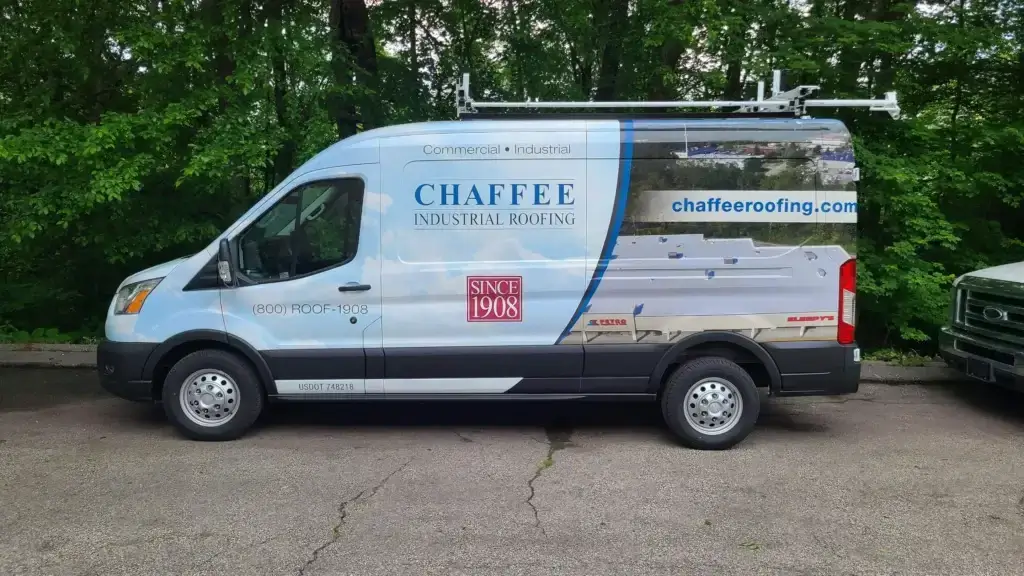Mechanically Attached Roof System
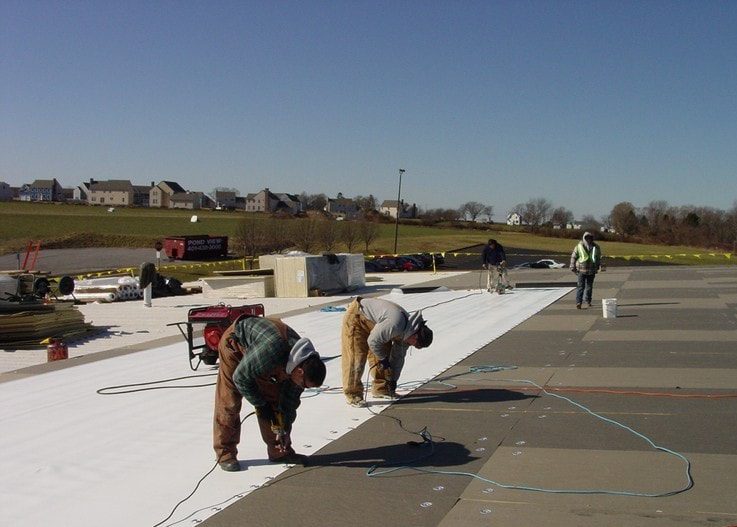
Mechanically Attached roof systems have been installed since the late 1960’s. They are known for consistency and strength, since a fastener goes directly through the membrane and insulation on its path to attaching itself directly to the structural deck of the building.
All mechanically attached roof systems have two core components, the fastener and the plate. On the insulation and separately on the membrane, a plate is laid down first, and then a fastener is driven into the structural deck.
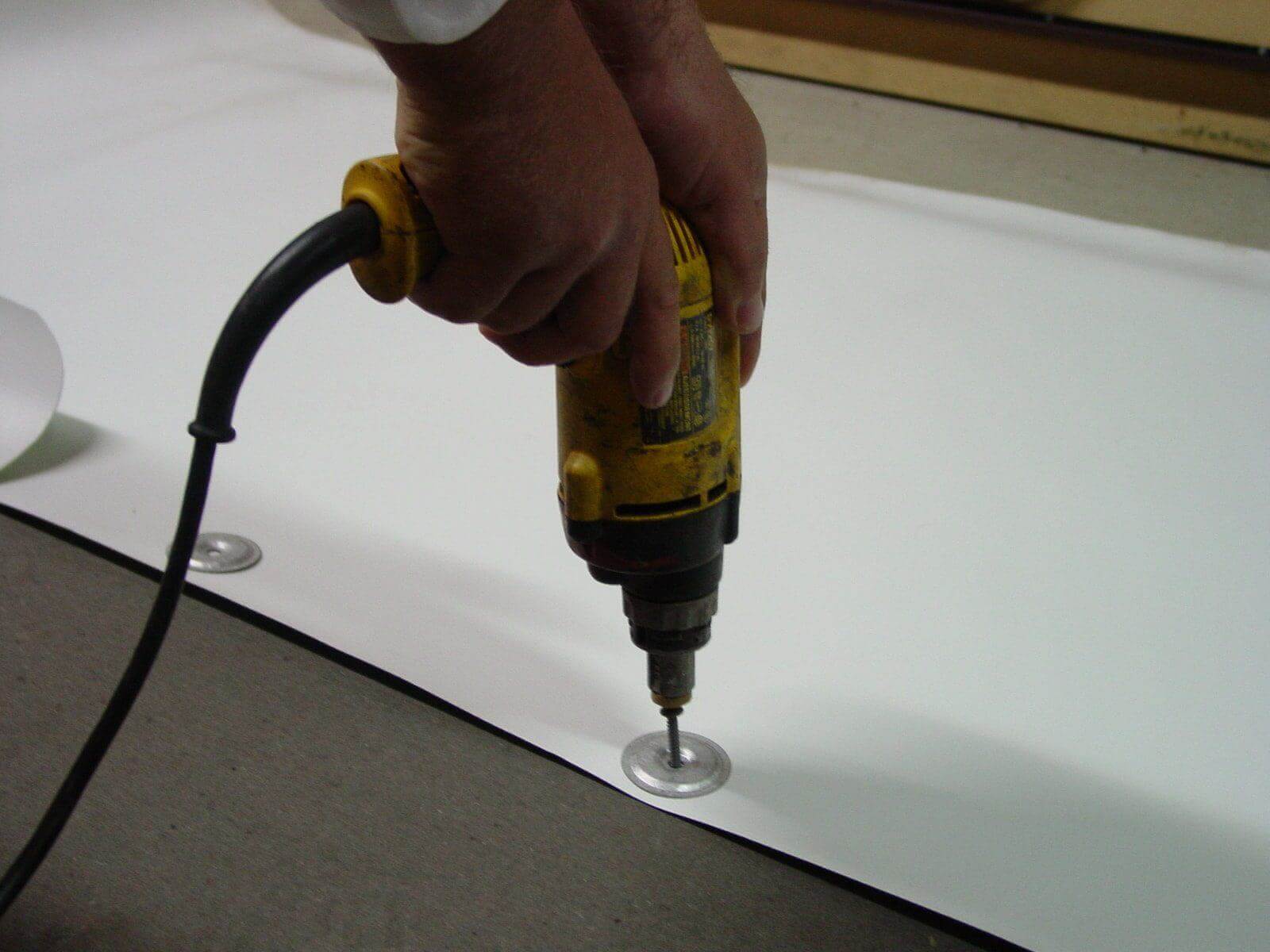
They are both laid out in accordance with a fastening pattern specified by the manufacturer. The number and location of the plates and fasteners is based on the warranty, wind speed, FM rating (if applicable), and numerous other factors.
Extra fasteners are typically installed along the corners and perimeter of the roof system, where wind hits the hardest. Extra fasteners are also installed on the perimeter of rooftop units, drains, and other rooftop penetrations to prevent the membrane from lifting or sagging during angle changes. Thicker fasteners also may be required based on the wind rating of a particular building.
All fasteners are then covered by membrane. The insulation fasteners, which are installed first, are covered by the top layer of the roof system, which is the membrane itself. The fasteners in the membrane are then covered by membrane from the next roll. For example, in a mechanically attached EPDM roof system, after the plates and fasteners are installed, the membrane in the surrounding area is cleaned, primed, and then covered by seam tape and the next EPDM membrane roll.
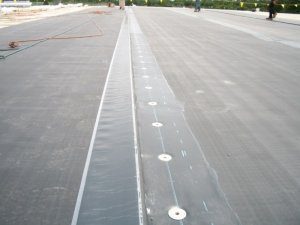
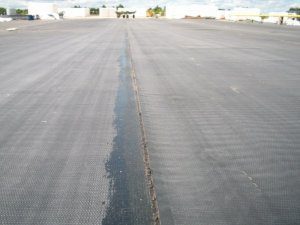
In a mechanically attached TPO roof system, the surrounding area is cleaned and heat welded together.
Hot air welds are considered to be stronger than taped seams
Benefits of a Mechanically Attached Roof
- Proven system that rarely fails over time.
- Doesn’t produce any foul smell during installation.
- Easier compliance with Factory Mutual (FM) wind speed and other ratings.
- Simple to enhance wind ratings.
- Available with any single-ply roof system.
- Significantly less fasteners than a fully adhered system, since the insulation requires 5-8 fasteners per 4’ by 8’ insulation board on a mechanically fastened roof, instead of 12-24 per insulation board on a fully adhered roof.
Drawbacks of a Mechanically Attached Roof
- Increased likelihood of a fastener hitting a light system or conduit that is close to the deck. The only way to significantly reduce this problem is to adhere both the insulation and membrane. Adhering only the membrane increases the amount of fasteners in the roof system (see fully adhered roof systems for more information)
Mechanically attached roof systems are an excellent choice for any building, particularly if Factory Mutual insures the building.
Contact Us
Get A Free Consultation Today!
Whether you have a question about types of roofs, the roofing process, or want to discuss your needs further, please fill out this brief form below, and someone will be in touch with you within 24 hours.
If you need immediate assistance our Emergency Phone is: 401-432-7670
"*" indicates required fields
